Nancy
Forum Replies Created
Viewing 11 posts - 1 through 11 (of 11 total)
-
NancyParticipantI love your beautiful botanical illustrations. They are so detailed and delicate. How do you create those fine lines so consistently? Do you use the brush recommended, or do you have a finer tip brush. I have not had success trying this leven of fine detail and would love to know your secret!in reply to: Filling Your Sketches with Color #711500
-
NancyParticipantI'm developing a little more control with my brush strokes. Used wet on wet for the body, then wet on dry for the facial features and a combination of wet on dry and dry brush on the tree.
 in reply to: Getting Comfortable with Watercolor #705070
in reply to: Getting Comfortable with Watercolor #705070 -
NancyParticipantI thought this emerald toucanet would be a good subject to try wet on wet, a technique I have never used. I know that Liz said to let the watercolors do their own thing, but I couldn't stop tinkering. Liz is correct, I did not improve my painting. I used wet on dry for the facial features and tried to use dry brush on the branch. I need to work on this technique, as I either put too much paint and water on the paper, or none! Adding color is helping me to look more carefully at what I am painting. Who knew one bird could have so many colors?!? The rainy season has just begun in Costa Rica, so I will be using these watercolor techniques when I paint from a photo or when I birdwatch from my porch!
 in reply to: Getting Comfortable with Watercolor #704703
in reply to: Getting Comfortable with Watercolor #704703 -
NancyParticipantI figure everyone could use a laugh just now, so I will share my tale of inattentive shopping. I have retired to Monteverde, Costa Rica and signed up for this class because I finally had the time to delve into watercolor painting. When I was in the states last Christmas, I dashed to Michael's arts and craft store to buy my supplies. I was in a hurry to get my shopping done so I could break my granddaughter out of daycare early. I asked the nice clerk if they had Sakura 24 color pocket Field Sketch Box watercolor sets. He found one for me, and I quickly purchased it, an extra brush and watercolor sketchbook. Living in rural Costa Rica, I often don't have a strong enough internet signal to stream the videos for this course, so I have been making my way through this course very slowly. Imagine my surprise and consternation when I finally opened my watercolor set and realized that I had purchased a "Creative Art Colors" kit with a metallic, pearlescent and fluorescent palette! NOT what I was expecting! It will be fine for painting some of the magnificent birds and flowers here, but my color mixing adventure will be very different from yours. The biggest drawback is that my kit has no black or gray. The darkest color is bright purple. I think I can purchase a child's watercolor set the next time I go into Santa Elena for groceries and solve that problem. I need much practice, but will share my paintings along the way. (These will also give you a good laugh, I think!)

 in reply to: Capturing Nature’s Color Palettes #702246
in reply to: Capturing Nature’s Color Palettes #702246 -
NancyParticipant
 I have to look at my gesture drawings with a sense of humor. Some of these drawings look like foxes, but others look more like deer. I wouldn't have noticed the similarities in the shapes of these animals if I hadn't done gesture drawings. Also, I paid more attention to the shape of the ears and the placement of the eyes relative to the ears and nose. The kit behaved so much like a puppy with fast, enthusiastic movements. The mom is molting, so I noticed where she had new and old fur. Gesture drawing makes me look more carefully at general shapes and notice behaviors, even if I can't capture them on paper. in reply to: Capturing Behavior – Gesture Drawing #682496
I have to look at my gesture drawings with a sense of humor. Some of these drawings look like foxes, but others look more like deer. I wouldn't have noticed the similarities in the shapes of these animals if I hadn't done gesture drawings. Also, I paid more attention to the shape of the ears and the placement of the eyes relative to the ears and nose. The kit behaved so much like a puppy with fast, enthusiastic movements. The mom is molting, so I noticed where she had new and old fur. Gesture drawing makes me look more carefully at general shapes and notice behaviors, even if I can't capture them on paper. in reply to: Capturing Behavior – Gesture Drawing #682496 -
NancyParticipantI went to Sierpe with The Birding Club of Costa Rica. We went to a farm where king vultures nest. Usually, king vultures are only seen soaring high in the sky, so it was a privilege to see them up close. There was an adult perched in a tree, and a juvenile down on the ground with some black vultures. They were eating a pig head the farmer had put out for them. While this is a working farm, allowing tourists to come and observe the vultures and have a meal boosts the farm's income. We spent a long time observing the juvenile's behavior. He, or she, was much larger than the black vultures (I looked it up:
 32 inches vs. 25 inches). The king vulture repeatedly spread its wings over the food in an attempt to keep the black vultures at bay. The king seemed to be getting more of the snack than the black vultures. Many questions came to mind. Why is the juvenile black, while the adults are mostly white? When does the plumage change? When does the juvenile grow the orange lumps on the beak that the adults have? Why do king vultures have smooth heads while black vultures have bumpy heads? Why is the king vulture's beak so much thicker and stronger looking than the black vultures? Is it a good thing that the farmer is feeding them? Were we disturbing them? (It did not appear so. We were far enough away that we needed binoculars to really see the details. I took photos and drew this scene from a photo.) Will I every really understand chiaroscuro and be able to express it in my drawings? in reply to: Noticing Themes in Nature #666611
32 inches vs. 25 inches). The king vulture repeatedly spread its wings over the food in an attempt to keep the black vultures at bay. The king seemed to be getting more of the snack than the black vultures. Many questions came to mind. Why is the juvenile black, while the adults are mostly white? When does the plumage change? When does the juvenile grow the orange lumps on the beak that the adults have? Why do king vultures have smooth heads while black vultures have bumpy heads? Why is the king vulture's beak so much thicker and stronger looking than the black vultures? Is it a good thing that the farmer is feeding them? Were we disturbing them? (It did not appear so. We were far enough away that we needed binoculars to really see the details. I took photos and drew this scene from a photo.) Will I every really understand chiaroscuro and be able to express it in my drawings? in reply to: Noticing Themes in Nature #666611 -
NancyParticipantPaulette, I know how you feel. My tomato looks diseased. We just need to keep practicing.in reply to: Illustrating the 3D World #664894
-
NancyParticipantI love your drawing. You captured all the identifying features of this bird exquisitely.in reply to: Jump Right in! #662743
-
NancyParticipantI like your shading, especially on the leaves. I agree that it is easier to draw birds that hold still!in reply to: Jump Right in! #662739
-
NancyParticipant
 Since I have not been drawing lately, I found everything challenging, but manageable once I started. I struggled to get the dimensions right on the bird. I need to work on head size and beaks. I found it easier to start by lightly drawing the shapes within the bird. I had difficulty getting the correct colors with my colored pencils. I would not have noticed the lichen and moss on the branch, nor how the warbler's feet gripped the branch if I were not drawing it. Nature journaling always helps me notice more details. in reply to: Jump Right in! #662738
Since I have not been drawing lately, I found everything challenging, but manageable once I started. I struggled to get the dimensions right on the bird. I need to work on head size and beaks. I found it easier to start by lightly drawing the shapes within the bird. I had difficulty getting the correct colors with my colored pencils. I would not have noticed the lichen and moss on the branch, nor how the warbler's feet gripped the branch if I were not drawing it. Nature journaling always helps me notice more details. in reply to: Jump Right in! #662738 -
NancyParticipantWhen I was younger, I took a nature journaling class from Claire Walker Leslie and loved how it helped to focus my observations or the natural world. When I began to teach middle school science, I used her teachings to have my students keep nature journals. I drew and recorded my observations to share with my students, but seldom found time to nature journal outside of work. Now, I have retired to Costa Rica, and I have still not made the time to keep a nature journal. I spend a great deal of time hiking and birdwatching, but rely on my camera to document my experiences. I am hoping this course nudges me into drawing and recording more detailed observations. I enjoyed all the different journal styles in the video, and will incorporate ideas from them all. I love how Shayna's drawings aren't actually contained in her boxes, but like the loose compartmentalization of sketches and descriptions. I want to make quick sketches to capture movement and behavior of birds to help me remember all the new species I am encountering here. I am struggling to remember field marks and identifying features of Costan Rican birds, and I hope to make my own personal field guide with drawings and descriptions of my own. I have not used watercolors with any success, and I am hoping that this course will improve my skills. I am amazed and inspired by the paintings people have shared here. Thank you.in reply to: Style Your Journal Your Way #661673
Viewing 11 posts - 1 through 11 (of 11 total)
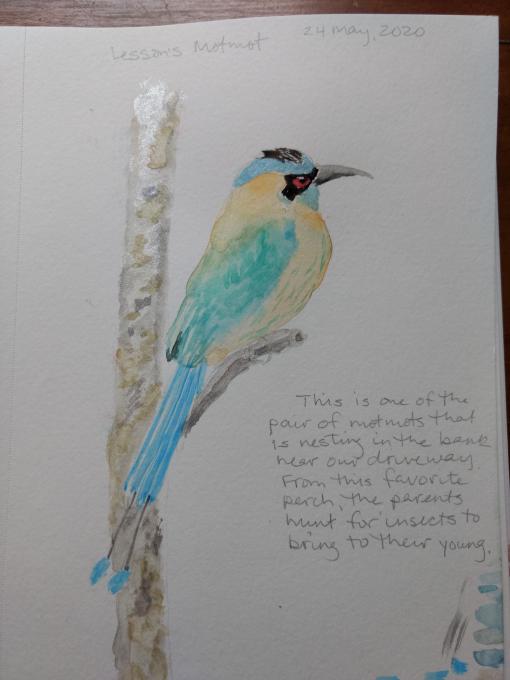
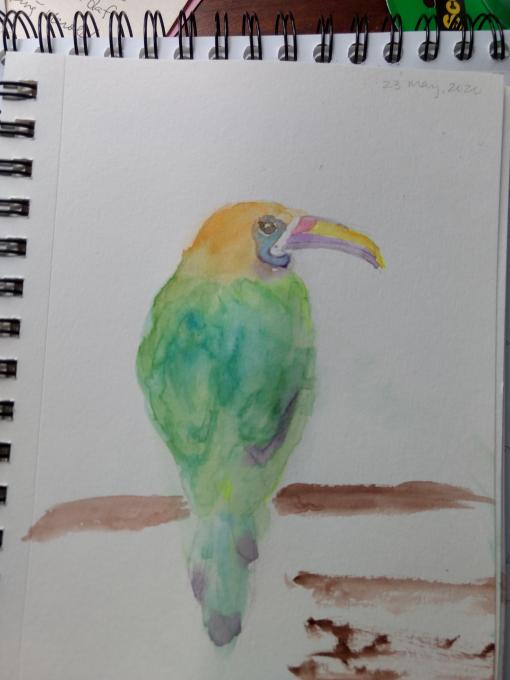
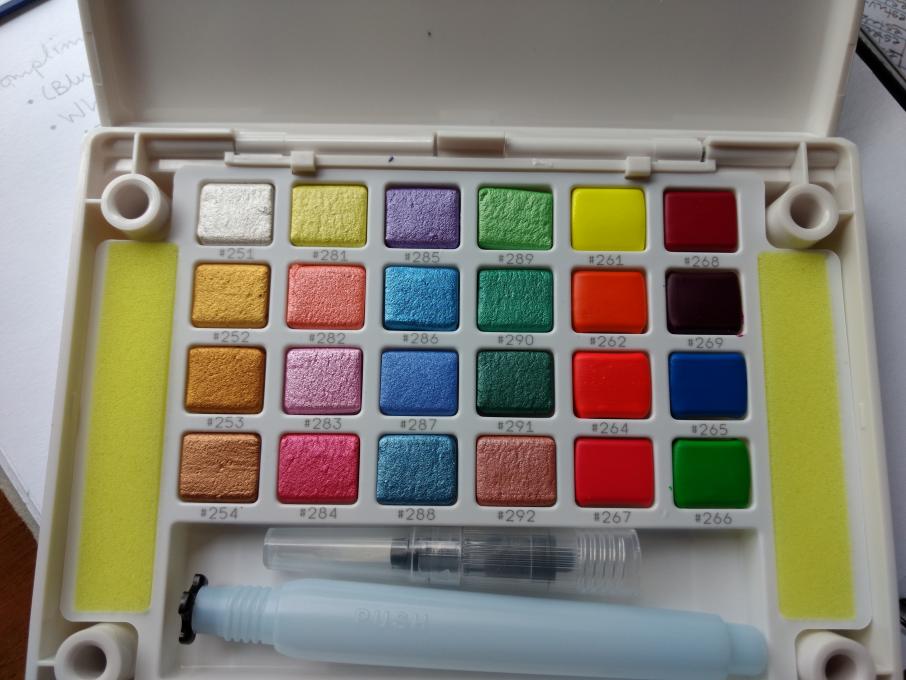
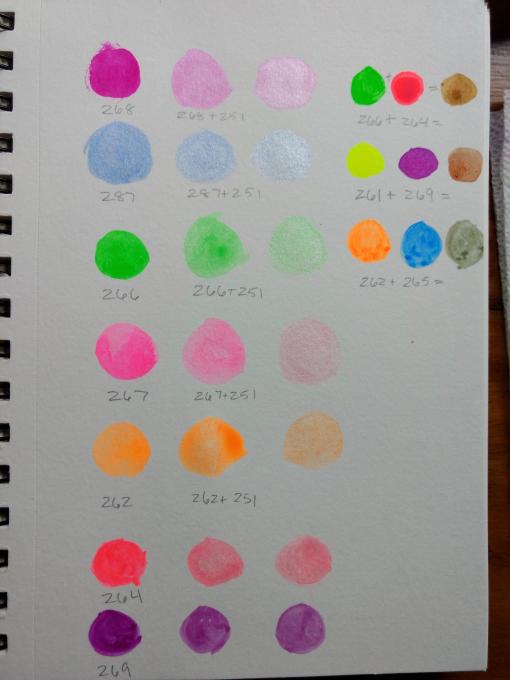
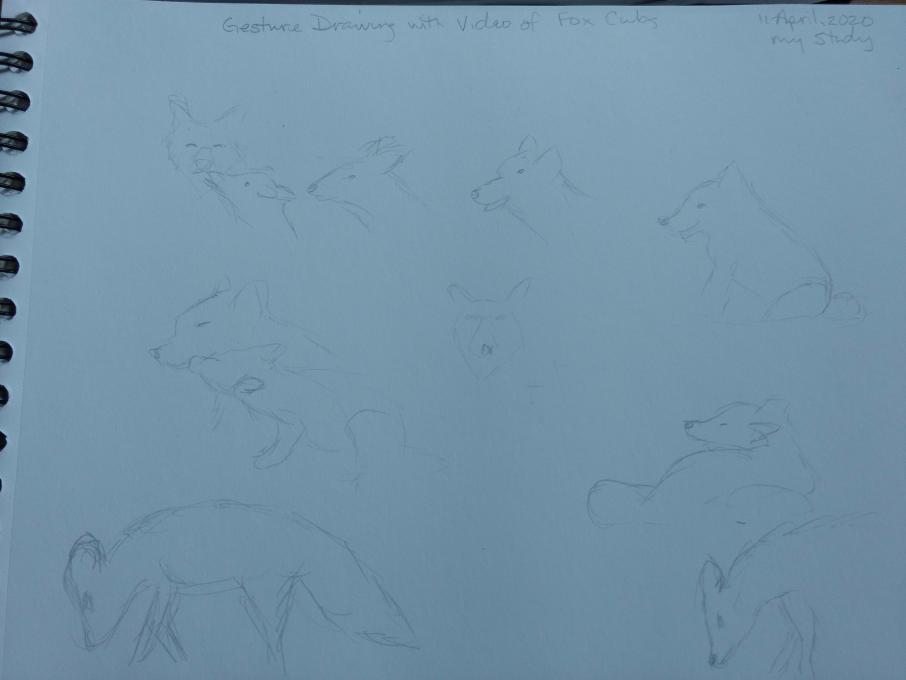 I have to look at my gesture drawings with a sense of humor. Some of these drawings look like foxes, but others look more like deer. I wouldn't have noticed the similarities in the shapes of these animals if I hadn't done gesture drawings. Also, I paid more attention to the shape of the ears and the placement of the eyes relative to the ears and nose. The kit behaved so much like a puppy with fast, enthusiastic movements. The mom is molting, so I noticed where she had new and old fur. Gesture drawing makes me look more carefully at general shapes and notice behaviors, even if I can't capture them on paper.
I have to look at my gesture drawings with a sense of humor. Some of these drawings look like foxes, but others look more like deer. I wouldn't have noticed the similarities in the shapes of these animals if I hadn't done gesture drawings. Also, I paid more attention to the shape of the ears and the placement of the eyes relative to the ears and nose. The kit behaved so much like a puppy with fast, enthusiastic movements. The mom is molting, so I noticed where she had new and old fur. Gesture drawing makes me look more carefully at general shapes and notice behaviors, even if I can't capture them on paper. 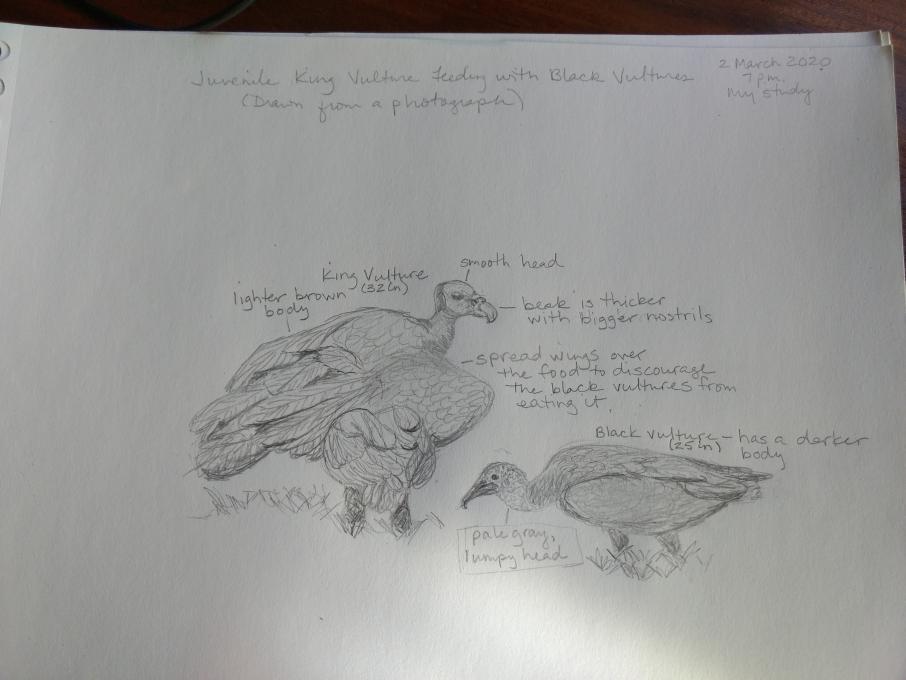 32 inches vs. 25 inches). The king vulture repeatedly spread its wings over the food in an attempt to keep the black vultures at bay. The king seemed to be getting more of the snack than the black vultures. Many questions came to mind. Why is the juvenile black, while the adults are mostly white? When does the plumage change? When does the juvenile grow the orange lumps on the beak that the adults have? Why do king vultures have smooth heads while black vultures have bumpy heads? Why is the king vulture's beak so much thicker and stronger looking than the black vultures? Is it a good thing that the farmer is feeding them? Were we disturbing them? (It did not appear so. We were far enough away that we needed binoculars to really see the details. I took photos and drew this scene from a photo.) Will I every really understand chiaroscuro and be able to express it in my drawings?
32 inches vs. 25 inches). The king vulture repeatedly spread its wings over the food in an attempt to keep the black vultures at bay. The king seemed to be getting more of the snack than the black vultures. Many questions came to mind. Why is the juvenile black, while the adults are mostly white? When does the plumage change? When does the juvenile grow the orange lumps on the beak that the adults have? Why do king vultures have smooth heads while black vultures have bumpy heads? Why is the king vulture's beak so much thicker and stronger looking than the black vultures? Is it a good thing that the farmer is feeding them? Were we disturbing them? (It did not appear so. We were far enough away that we needed binoculars to really see the details. I took photos and drew this scene from a photo.) Will I every really understand chiaroscuro and be able to express it in my drawings?  Since I have not been drawing lately, I found everything challenging, but manageable once I started. I struggled to get the dimensions right on the bird. I need to work on head size and beaks. I found it easier to start by lightly drawing the shapes within the bird. I had difficulty getting the correct colors with my colored pencils. I would not have noticed the lichen and moss on the branch, nor how the warbler's feet gripped the branch if I were not drawing it. Nature journaling always helps me notice more details.
Since I have not been drawing lately, I found everything challenging, but manageable once I started. I struggled to get the dimensions right on the bird. I need to work on head size and beaks. I found it easier to start by lightly drawing the shapes within the bird. I had difficulty getting the correct colors with my colored pencils. I would not have noticed the lichen and moss on the branch, nor how the warbler's feet gripped the branch if I were not drawing it. Nature journaling always helps me notice more details.